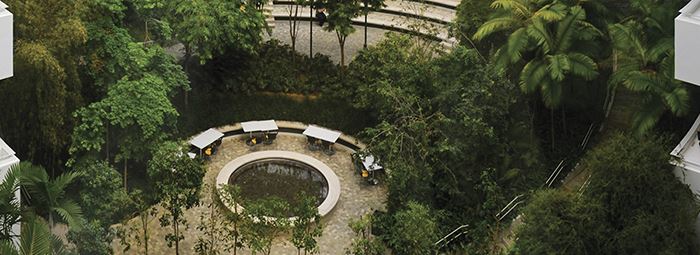
©2024 This excerpt taken from the article of the same name which appeared in ASHRAE Journal, vol. 66, No. 9, September 2024.
Forest Atrium Supports Indoor Air Quality in Sustainable Research Center
By Eduardo Seiji Yamada, C.Eng., BCxP, Member ASHRAE
About the Author
Eduardo Yamada, C.Eng., BCxP, is technical manager of Building Systems and Associate at CTE in São Paulo, Brazil.
Located in São Paulo, Brazil, the Albert Einstein Brazilian Israeli Beneficent Society Learning and Research Center (Albert Einstein LRC) has all the requirements to become one of the most advanced institutions and a reference in medical and health studies and research in South America.
The building, with ~301,390 ft2 (28 000 m2) of educational and research areas, was designed to meet set sustainability goals. The owners defined this as obtaining LEED Gold certification for New Construction, version 4.0. Architectural and building systems were designed to achieve a reduction of at least 16% of annual energy cost compared to the baseline model, established by ASHRAE/IES Standard 90.1-2010, Appendix G.
Albert Einstein LRC is a large structure with highly complex facilities. The glass dome and internal landscaping are main elements. In the main atrium, a forest was designed to bring nature inside and hosts diverse species from the Atlantic Forest. This landscaping strategy was designed to provide spaces with nature proximity, or biophilia, improving indoor air quality (IAQ), daylighting access and environmental comfort, promoting maximum occupant well-being.
To support the biophilic and daylighting architectural elements in this building, it was necessary to consider selective high-performance glass for the main atrium skylight to not only reduce energy consumption (for cooling loads to minimize equipment size and optimize whole building energy performance), but also permit natural light. Many energy modeling studies were conducted to decide the best glass and envelope material combination for this project.
Read the Full Article
ASHRAE Members have free access to the full-text PDF of this article as well as the complete ASHRAE Journal archives back to 1997 in the Free Member Access Area.
Non-members can purchase features from the ASHRAE Bookstore. Or, Join ASHRAE!
Return to Featured Article Excerpts
Return to ASHRAE Journal Featured Article Excerpts